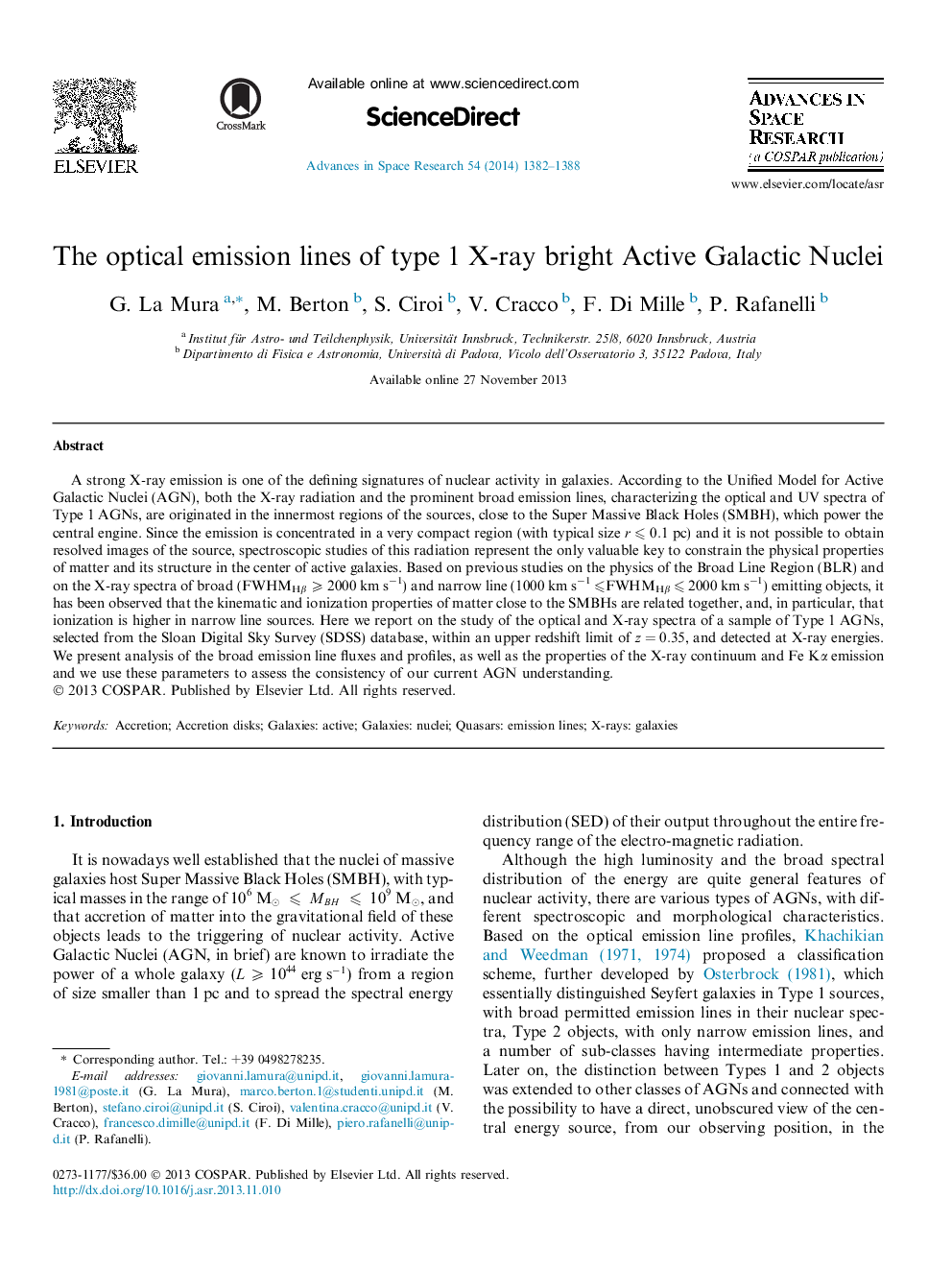| Article ID | Journal | Published Year | Pages | File Type |
|---|---|---|---|---|
| 1764714 | Advances in Space Research | 2014 | 7 Pages |
A strong X-ray emission is one of the defining signatures of nuclear activity in galaxies. According to the Unified Model for Active Galactic Nuclei (AGN), both the X-ray radiation and the prominent broad emission lines, characterizing the optical and UV spectra of Type 1 AGNs, are originated in the innermost regions of the sources, close to the Super Massive Black Holes (SMBH), which power the central engine. Since the emission is concentrated in a very compact region (with typical size r⩽0.1r⩽0.1 pc) and it is not possible to obtain resolved images of the source, spectroscopic studies of this radiation represent the only valuable key to constrain the physical properties of matter and its structure in the center of active galaxies. Based on previous studies on the physics of the Broad Line Region (BLR) and on the X-ray spectra of broad (FWHMHβ ⩾ 2000 km s−1) and narrow line (1000 km s−1 ⩽FWHMHβ ⩽ 2000 km s−1) emitting objects, it has been observed that the kinematic and ionization properties of matter close to the SMBHs are related together, and, in particular, that ionization is higher in narrow line sources. Here we report on the study of the optical and X-ray spectra of a sample of Type 1 AGNs, selected from the Sloan Digital Sky Survey (SDSS) database, within an upper redshift limit of z=0.35z=0.35, and detected at X-ray energies. We present analysis of the broad emission line fluxes and profiles, as well as the properties of the X-ray continuum and Fe Kα emission and we use these parameters to assess the consistency of our current AGN understanding.
